Physical Address
304 North Cardinal St.
Dorchester Center, MA 02124
Physical Address
304 North Cardinal St.
Dorchester Center, MA 02124
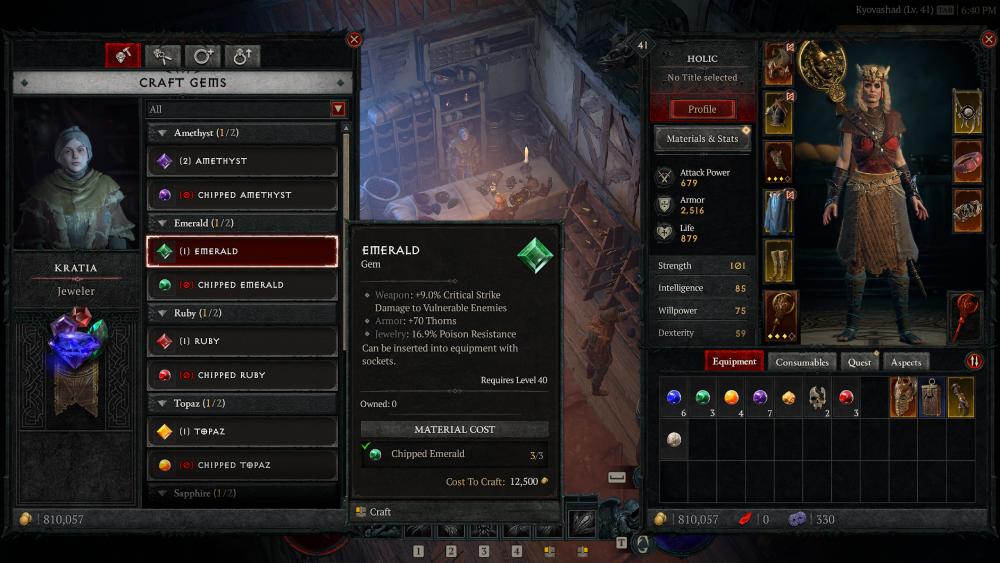
Hey there, adventurer! Are you ready to delve into the depths of crafting in Diablo 4? As you embark on your epic journey through the dark and treacherous world of Sanctuary, the art of crafting will become your trusty companion. In this exciting Diablo 4 crafting guide, we’ll unravel the secrets of the crafting system, uncover the mechanics that shape your path, and equip you with the knowledge to forge mighty items. Get ready to unleash your creativity and master the art of crafting in Diablo 4 like never before. So, grab your materials and join us on this crafting adventure! Your ultimate gear awaits!
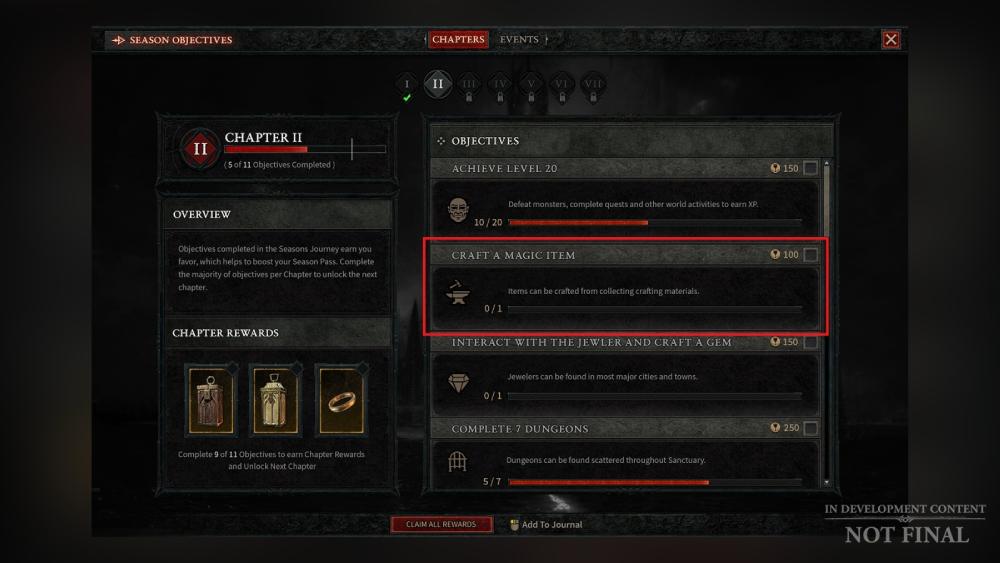
Crafting in Diablo 4 is an intricate and diverse system that offers players the opportunity to create powerful items and enhance their gear. It involves a range of crafting materials, such as gems, runes, and metals, each with its own unique properties and uses. These materials can be acquired by defeating enemies, completing quests, or purchasing them from vendors. Crafting stations, including the blacksmith, jeweler, and enchantress, are spread throughout the game world, each specializing in specific types of crafting. The blacksmith is the go-to for crafting weapons and armor, while the jeweler focuses on gems and jewelry.
To craft in Diablo 4, players must combine various crafting materials, allowing them to upgrade existing items, forge new ones, or add potent enchantments to their gear. While the crafting process may demand time and resources, the rewards are often worth the investment. Experimenting with different combinations of materials can lead to the creation of powerful items with enhanced attributes and abilities. Understanding the intricacies of crafting materials and utilizing the appropriate crafting stations is crucial for maximizing the potential of the system and obtaining the best gear for your character. So, prepare your materials, find the right crafting stations, and unleash your creativity to forge your path to greatness in Diablo 4.
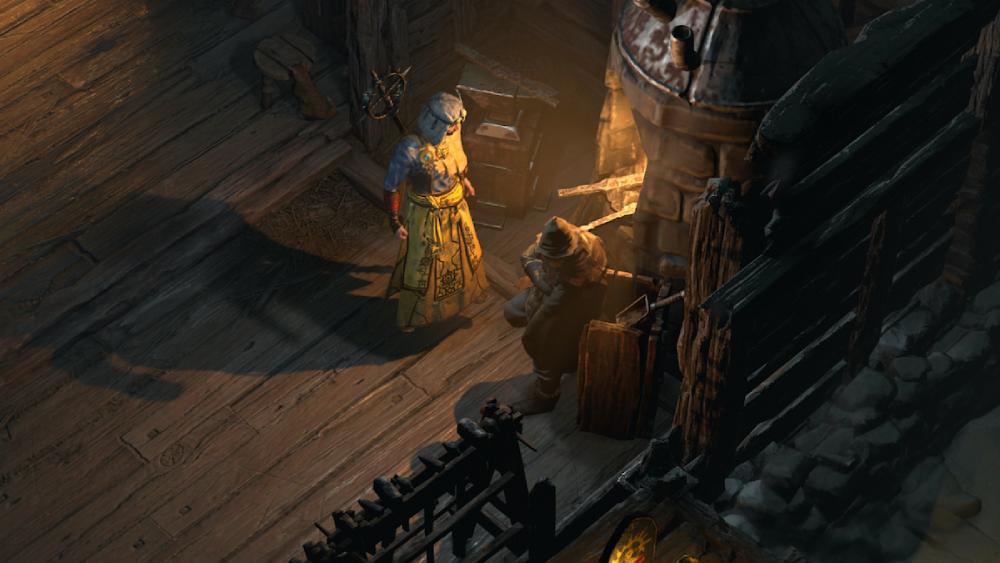
In Diablo 4, the Blacksmith and Alchemist play important roles in the crafting system, offering valuable services to players. The Blacksmith is a familiar character who can assist in crafting and upgrading weapons and armor. Depending on the rarity of the item, the Blacksmith can enhance its power through upgrades. Additionally, players can bring old armor to the Blacksmith to dismantle and salvage, obtaining valuable crafting materials in the process. Any jewels attached to the dismantled weapon are automatically returned to the player’s inventory. The Blacksmith can be unlocked early in the game, providing essential crafting support.
On the other hand, Diablo 4 introduces a new character, the Alchemist, who offers unique services related to potions. Players can visit the Alchemist to upgrade their potions, including the health potion. These upgraded potions provide various buffs and advantages, offering valuable assistance in challenging situations. It’s worth noting that in Diablo 4, health potions are no longer randomly dropped or sold by vendors like in previous titles. Instead, players will have a health potion available on their action bar, ensuring quick access to healing during intense battles.
Both the Blacksmith and Alchemist add depth and customization to the crafting system in Diablo 4, providing players with valuable resources, upgrades, and enhancements to their gear and potions. Mastering these services will be crucial in creating powerful characters and overcoming the challenges that await in the world of Sanctuary.

The Occultist and the Jeweler are two essential vendors in Diablo 4, each offering unique services to enhance your gameplay experience. The Occultist specializes in armor enhancement, allowing you to modify the stats of your armor and excel in specific categories. They can also craft Sigils needed for imprinting Legendary Aspects on your gear and accessing Nightmare Dungeons for customizing your character’s powers. The Occultist is a vendor you should definitely visit to optimize your character’s performance.
On the other hand, the Jeweler is your go-to vendor for upgrading jewels and gems that you acquire during your journey. They can increase the amount of resistance or buffs offered by your jewels and even craft powerful items such as rings and amulets. Additionally, the Jeweler provides the service of socketing or removing gems from your armor, allowing you to customize and fine-tune your gear as per your playstyle. Don’t overlook the Jeweler’s expertise when it comes to maximizing the potential of your valuable gems.

To create powerful items in Diablo 4, you’ll need various crafting materials. These materials include gems, runes, metals, and other rare components. Gems and runes can be found by exploring the game world, defeating enemies, or completing quests. Metals and other crafting components can be obtained by dismantling unwanted items or purchasing them from vendors. It’s important to note that the easiest and most convenient way to acquire crafting materials is through reliable online marketplaces like MMOGAH. They offer a secure and fast delivery service, ensuring that you can quickly obtain the materials you need to craft the best items in Diablo 4.
In Diablo 4, crafting materials play a crucial role in creating powerful items and enhancing your character’s abilities. There are four categories of crafting materials: Ores, Monster Parts, Herbs, and Skins. Each category offers unique materials with specific uses in the crafting process. Here is a comprehensive table of all the crafting materials found in Diablo 4:
| Category | Crafting Material |
|---|---|
| Ores | Iron Chunk |
| Ores | Silver Ore |
| Ores | Scattered Prism |
| Monster Parts | Crushed Beast Bones |
| Monster Parts | Demon’s Heart |
| Monster Parts | Grave Dust |
| Monster Parts | Paletongue |
| Herbs | Biteberry |
| Herbs | Gallowvine |
| Herbs | Lifesbane |
| Herbs | Angelbreath |
| Herbs | Blightshade |
| Herbs | Howler Moss |
| Herbs | Reddamine |
| Herbs | Fiend Rose |
| Skins | Rawhide |
| Skins | Superior Leather |
Diablo 4 offers a diverse range of crafting materials to enhance your gameplay experience. Ores, such as Iron Chunk, Silver Ore, and the rare Scattered Prism, are primarily used by blacksmiths for crafting and upgrading weapons and jewelry. Monster Parts, including Crushed Beast Bones, Demon’s Heart, Grave Dust, and Paletongue, are obtained from slain creatures and utilized for upgrading potions and elixirs. Herbs like Biteberry, Gallowvine, Lifesbane, Angelbreath, Blightshade, Howler Moss, Reddamine, and Fiend Rose are scattered throughout the game world and can be used to craft incense, elixirs, and potions. Finally, Skins, specifically Rawhide and Superior Leather, are acquired by defeating beasts and wildlife, serving as essential materials for upgrading armor.

Crafting in Diablo 4 offers players the opportunity to create powerful and customized items to enhance their characters’ capabilities. There are three tiers of crafting available in the game, each with its own unique benefits and requirements.
The first tier is basic crafting, which is accessible right from the beginning of the game. This type of crafting utilizes common materials that can be easily obtained from defeated enemies or purchased from vendors. Basic crafting allows players to create items using these basic materials, providing a foundation for improving their equipment.
The second tier is empowered crafting, which introduces the use of rare materials obtained from specific enemies and events. Empowered crafting grants players the ability to add specific attributes to their crafted items, such as increased critical hit chance or damage. By utilizing these rare materials, players can enhance the effectiveness of their equipment and tailor it to their preferred playstyle.
The third and most advanced tier is primal crafting. Primal crafting involves utilizing extremely rare materials that can only be obtained by overcoming the game’s most challenging and complex obstacles. This tier allows players to create items with the highest possible attributes, making them exceptionally powerful and valuable. Primal crafting represents the pinnacle of item customization and provides a rewarding pursuit for dedicated players seeking the best gear.
Additionally, players can further enhance their crafted items by utilizing runes and gems. Runes can be socketed into equipment, providing specific bonuses such as increased damage or resistance. Gems, on the other hand, offer additional attribute enhancements, such as improved critical hit damage or increased experience gain. By carefully selecting and utilizing runes and gems, players can augment their gear to suit their desired playstyle and maximize their character’s potential.
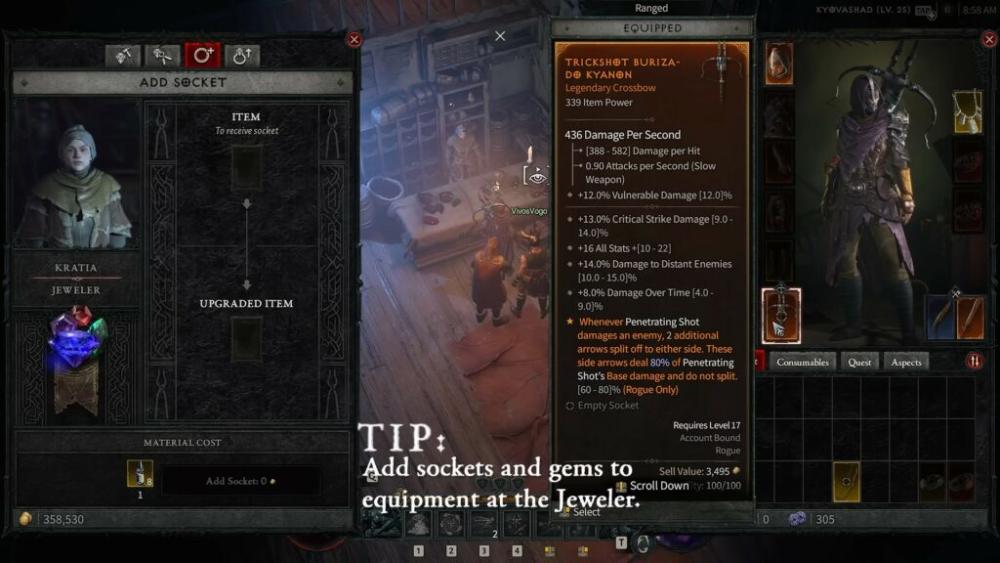
To craft the best items in Diablo 4 and gain a significant advantage, players should keep the following tips in mind:
By following these tips, players can optimize their crafting process in Diablo 4 and create exceptional items that will give them a significant edge in combat.
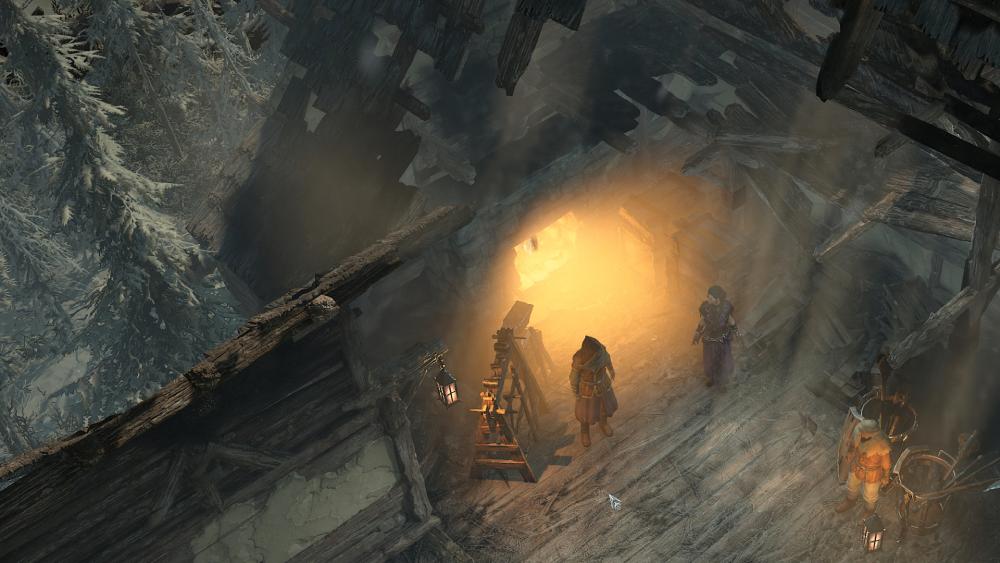
Crafting in Diablo 4 varies in focus and priorities depending on the game stage. Here’s what players should be focused on during different stages of the game:
Early Game: In the early game, players should prioritize upgrading their weapon at the blacksmith to gain a significant damage boost. Additionally, consider upgrading gear at the jeweler if you plan to keep them for a while. Remember that gloves and boots cannot have sockets, but weapons, chest armor, and pants can have up to two sockets. Utilize sockets strategically to enhance specific builds or playstyles.
Mid-Game: As you progress to the mid-game, which is typically around level 50, start searching for blue items that roll into secret-grade gear. These items offer higher-grade bonuses and can greatly enhance your power. Instead of immediately selling these items, keep an eye out for them and evaluate their potential for your character’s build.
Late Game: In the late game, around level 70, focus on finding blue items that roll into ancestral grade gear. These items provide even greater bonuses and are specifically designed to be found in the late game to further boost your power. It’s essential to prioritize checking the grade of magical items before selling them, as they might possess valuable attributes for your character.
Advanced Crafting and Skill Points: In the advanced crafting stage, players gain access to higher-grade gears that appear after level 50, and even higher grades after level 70. This includes secret gear and ancestral gear, which play a vital role in late-game crafting and advanced crafting systems. Different gear pieces provide skill points for various skill trees, such as gloves granting skill ranks for core spells and amulets providing multiple skill ranks across different skill trees. Utilize the Oculus enchantment to roll for desired skill ranks, aiming for +2 skill ranks for a specific skill to gain a significant damage boost. Crafting gear with legendary effects or codexes can also be a powerful method, especially if you have desirable skill ranks on your amulet. Remember to check the rolls on legendary effects before crafting to ensure optimal results.
Crafting in Diablo 4 is crucial for maximizing your character’s potential. There are three tiers of crafting: basic, empowered, and primal. Basic crafting uses easily obtained materials, empowered crafting adds specific attributes and primal crafting creates items with the highest possible attributes. Upgrading gear and using sockets are important strategies. Consider legendary effects and rolls when crafting, as they greatly impact item power. Prioritize crafting based on your character’s build, experiment with different stations, and acquire rare materials. By following these tips, you can master Diablo 4’s crafting mechanics and create powerful items for your character.